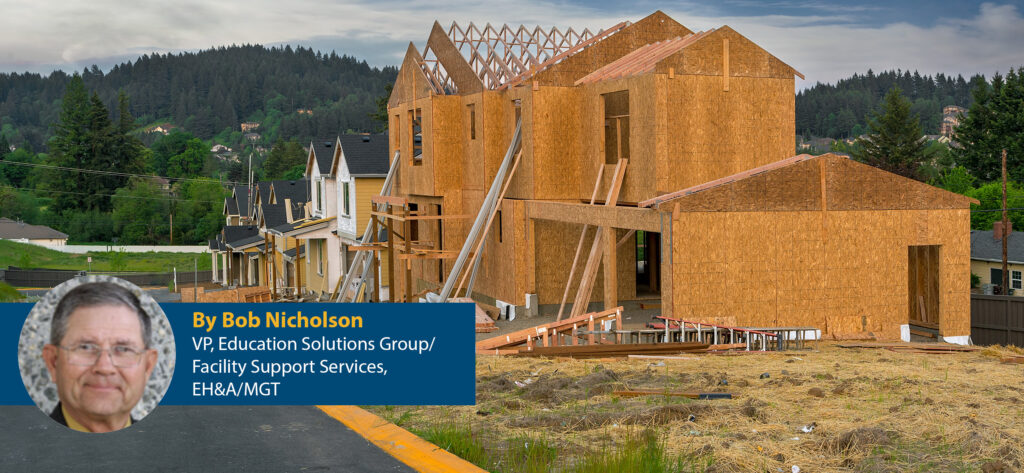
By Bob Nicholson, Vice President – Education Solutions Group/Facility Support Services, EH&A/MGT
In this first part of a multi-part series of articles, we will discuss what you might want to know and why you need to know about development impact fees. First, let’s begin with discussing that development impact fees are NOT a tax but are, rather, one-time charges applied to developments. These fees are imposed to raise needed revenue for construction and expansion of facilities necessary as a result of the development. They raise the necessary capital for additional water, sewers, storm drains, roads, schools, libraries, parks, and recreational facilities made necessary for the residents that will eventually reside in the new area. The funds cannot be used for operations, maintenance, repairs, alterations, or replacement of capital facilities, in most cases. There are some exceptions that we will explore in future articles, so stay tuned for those discussions coming soon!
In some communities, development charges are characterized as “impact fees” and may also be called impact fees. You may also find them called benefit assessments, user fees, or connection charges. We have found, in some places, these fees are associated with “lateral” connection fees for services connecting to services provided under roads. These fees are a tool collected to assist with installing and building new public facilities, or to improve services for new residents and raise the money needed for these purposes. These fees became necessary when voters resisted increases in property taxes and federal funds for local public services declined. Local governments became reliant on fees as an alternative source of funding.
Collecting these fees is predicated on the premise that development should pay for improvements for public facilities necessary for growth of an area, region, or city. The imposition of the fee is supposed to provide the facilities necessary and offset subsidies for new development and allows development for land closer to an urban area. Residents can then assist and ease the burden of providing incremental infrastructure and shift future infrastructure costs onto new residents. This is supposed to assist new residents buy into new communities and developers to distribute costs more equitably for new communities and residents. Based on a comprehensive plan, these fees can guide efficient development.
Now that we have briefly discussed what development impact fees are and how they are used, our next article will explore further the importance of these fees. We will provide information about what steps you need to take to be prepared to collect the fee and how that should happen. We will explore further the necessity to engage in the processes of development and partnerships necessary to maximize the benefits for the community by collection and use of these fees. We will further explore the steps one needs to be aware of and utilize for the maximization of these fees. As we develop these next parts of this series, we will add additional information that you may find useful in your building of relationships with the developers in your community that may help your decisions about what to use these fees for and how they best serve the communities you serve. Stay tuned, lots more coming in future parts of this series.


